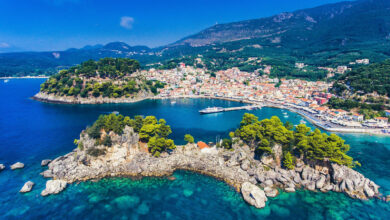Cuba is an island nation located in the northern Caribbean, known for its rich history, vibrant culture, and diverse landscapes. Despite facing political and economic challenges, Cuba has remained a popular tourist destination, attracting millions of visitors each year with its unique blend of colonial architecture, tropical beaches, and fascinating cultural heritage.
One of the defining characteristics of Cuba is its history, which has been shaped by centuries of colonization, revolution, and political turmoil. The island was first inhabited by indigenous Taíno people, who were later replaced by Spanish settlers. Over the centuries, Cuba has been a centre of trade and commerce and has played a key role in several historical events, including the Cuban Revolution of 1959 and the Cuban Missile Crisis of 1962. Today, Cuba is one of the last communist states in the world, and its history continues to shape its political and cultural landscape.
Another aspect of Cuba that draws visitors is its vibrant culture, which is a reflection of its rich heritage. From the lively rhythms of salsa and son to the ornate colonial architecture of Old Havana, Cuba is a feast for the senses. The island is also famous for its cigars, which are considered by many to be the finest in the world.
Cuba is also known for its diverse landscapes, which range from the tropical beaches of Varadero to the lush hills of the Sierra Maestra Mountains. Visitors can explore the island’s natural beauty on horseback, by boat, or on foot, taking in its lush forests, rolling hills, and stunning coastline.
Despite its many attractions, Cuba has faced significant economic and political challenges in recent years. The island has a complex relationship with the United States, which has maintained an economic embargo on Cuba for many decades. However, in recent years, there have been signs of a thawing in relations between the two countries, and Cuba has made strides in opening up its economy to the outside world.
In conclusion, Cuba is a fascinating and complex nation that has a lot to offer visitors. From its rich history and vibrant culture to its diverse landscapes and tropical beauty, Cuba is a destination that should be on every traveller’s list. Despite the challenges it faces, Cuba remains a beacon of resilience and a testament to the enduring spirit of its people.
Best Time to Visit Cuba
The best time to visit Cuba is from December to May, during the dry season. This period is characterized by warm and pleasant temperatures, with less rainfall, making it ideal for outdoor activities and exploring the country. June to November is the rainy season and can be hot and humid, with occasional tropical storms.
Average Temperature in Cuba
Cuba has a tropical climate with warm temperatures throughout the year. The average temperature in Havana, the capital of Cuba, ranges from 20°C to 30°C (68°F to 86°F) throughout the year.
The warmest months are from June to September, with average temperatures ranging from 27°C to 30°C (81°F to 86°F). The coolest months are from December to February, with average temperatures ranging from 20°C to 25°C (68°F to 77°F).
Coastal areas tend to be slightly warmer than inland areas, with temperatures in Varadero, a popular beach resort town, ranging from 25°C to 29°C (77°F to 84°F) throughout the year.
Cuba is also known for its high humidity levels, which can make temperatures feel warmer than they actually are. It is important to stay hydrated and take breaks from the heat, especially during the warmer months.
Overall, Cuba has a warm and tropical climate, with average temperatures ranging from 20°C to 30°C (68°F to 86°F) throughout the year.
Credits
Photo: Cuba. Photo by: Alexander Kunze on Unsplash



